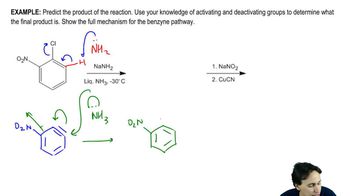Show how Friedel–Crafts acylation might be used to synthesize the following compounds.
c. n-butylbenzene
 Verified step by step guidance
Verified step by step guidance Verified video answer for a similar problem:
Verified video answer for a similar problem:



 5:20m
5:20mMaster Friedel-Crafts Acylation with a bite sized video explanation from Johnny
Start learning